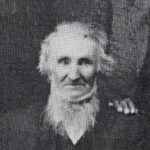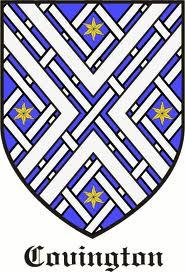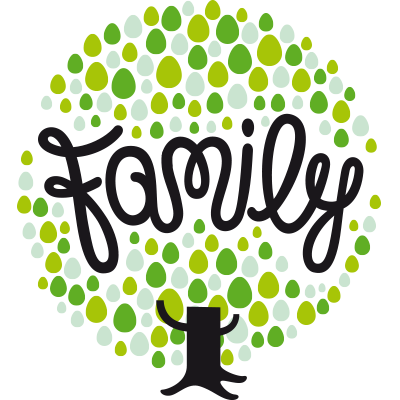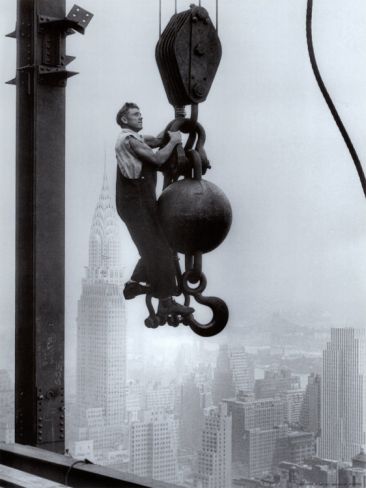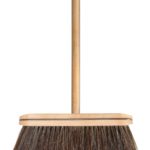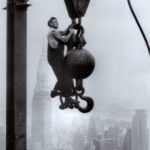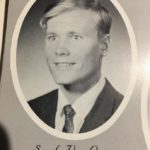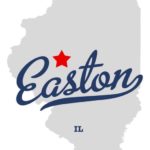Whitaker Brood
The surname Whiteaker belongs to the large category of Anglo-Saxon habitation names, which are derived from pre-existing names for towns, villages, parishes, or farmsteads. The surname Whiteaker was first found in Warwickshire where the first record of the name was Johias Whitacre (1042-1066), who died while fighting at the Battle of Hastings on the side of King Harold. Despite the fact he was on the losing side of the battle, his family were permitted to keep their estates there. The place names Whitacre, Over Whitacre and Nether Whitacre were listed in the Domesday Book as Witacre and literally meant “white cultivated land.” One of the earliest rolls was the Hundredorum Rolls of 1273. Those rolls listed: Alan Witacur in Oxfordshire; and Richard de Whitacre in Northamptonshire. Years later, the Yorkshire Poll Tax Rolls of 1379 listed: Henricus Wyteacre; Willelmus de Wetaker; and Rogerus Whitteacres. “The Whittakers or Whitakers are numerous in Lancashire. From the 14th to the 16th century a gentle family of this name lived at High Whitaker or Whitacre in the vills of Simonstone and Padiham, in the parish of Whalley: the Whitakers of Holme and those of Henthorn branched off in the 15th century and those of Healy about 1620.
Here we go. The early entries have little or no information. the words in parentheses (25GGF) designates what relationship they are to Linda (Meeker) Knuppel.
(25GGF) Johias Whitaker (1042 – 1066)
(24GGF). Edwinus Whitaker (1060 – 1087)
(23GGF) Sir Simon Whitaker (1080 – 1135) Knighted in 1100
(22GGF) Alanus Whitaker (1133 -1227)
(21GGF) Sir Jordan Whitaker (1200 – 1275) Knighted; married Phillipa Astleymil
(20GGF) Sir John Whitaker (1240-1331) Knighted in 1262; MAGNA CARTA confirmer
(19GGF) Sir John Whitaker (1275 -1330) married in 1316 to Amica Marmion
(18GGF) Sir Richard Whitaker (1300 -1375) Knighted by Edward III in 1327; married Joan Culi
Notes on Sir Richard- Sir Richard de Whitacre (circa 1300-1375) was the Lord of the Manors of Nether Whitacre, Over Whitacre, Elmdon, and Freasley. He was the son of Sir John de Whitacre and Amica de Marmion and grandson of Sir John de Whitacre, a confirmer of the Magna Carta. His principal seat was at Whitacre Hall, a Medieval fortified manor house in Nether Whitacre.His family, being of Anglo-Saxon descent, were of the very few who were allowed to keep their lands after the Norman Conquest. In fact, his ancestor Johias Whitacre (1042-1066) died while fighting at the Battle of Hastings on the side of King Harold. Nevertheless, this family was allowed to keep their lands in Warwickshire and continued to rise to prominence throughout the Medieval period.Sir Richard was knighted by King Edward III in 1327. He fought in the King’s personal retinue during the English victories at Calais and Crecy during the Hundred Years’ War. For this, it is believed that he received lands in Padiham, Lancashire, where his descendants would eventually move to, settling at The Holme. He was a vassal of the Baron Tamworth, then in the Marmion family of which his mother was a part, who were lords of Tamworth Castle where Sir Richard is known to have fulfilled many of his Knight-services. It is also likely that he at times served the Earl of Warwick, although no records of this are in existence.Sir Richard is documented as having a few legal issues. In one case, after banding together with a group of about six relatives, he assaulted a rival family member from a nearby parish and caused him physical harm. When the lawyer who would be representing the prosecution traveled through Nether Whitacre, he was imprisoned, supposedly at Whitacre Hall, until after the trial was over. In another case, Sir Richard sued, successfully, a church for lands he felt he was entitled to. After marrying Joan Culi, he produced a few heirs, one of which, Sir Simon de Whitacre, would succeed him. He is thought to have died around 1375. It is not known where his final resting place is; however, the local church of St. Giles is the most likely place.
(17GGF) Sir Richard Whitaker (1380–1434) born and died at Symonston Hall, Lancashire, England.
(16GGF) Thomas Henry Whitaker (1405-1448) born and died at Symonstone Hall, Clivinger Burnley, Lancashire, England. He married Lady Elizabeth of Burnley in 1430. They had one son, Robert, born in 1440.
(15GGF) Robert Whitaker was born in 1440 in Lancashire, England and died abt 1531 in Yorkshire, England. He married Mary Greenwood (1440-1531) in 1458 and they had one child, Thomas Cromwell Whitaker, born in 1458.
(14GGF) Thomas Cromwell Whitaker was born 1458 Simonstone Hall, Lancashire, England and died in 1529 at Simonstone Hall, Lancashire, England. He married Joanna Pritchard in 1480 and they had 13 children. He then married Mary Greenwood and they had one son in 1523.
(13GGF) Richard Thomas Whitaker was born in 1480 in Burnley England and died in 1540. He married Margaret N. Wellascotts (1480-1545) in 1503 and they had four children: Thomas (1504-1598) ,Sir Henry (1506-1599). Margaret (1525-1567) and Sir Thomas Laurence lll (1528-1582).
(12GGF) When Thomas Whitaker was born on September 22, 1504, in Holme, Lancashire, England, his father, Richard, was 24 and his mother, Margaret, was 24. He married Elizabeth Nowell and they had eight children together: Richard Whitaker 1545–1597 Robert Whitaker Of Holme 1545–1581 William Whitaker 1548–1595 William A. “Rev Doctor Divinity” (Whittekers) (1548-1595) Frances Whitaker 1594–1687 Joseph Whitaker –1726 Willm. Whitaker –1738 Thos Dobson –1799
(11GGF) William A. “Rev Doctor Divinity” Whitaker was born in December 1548 in Lancashire, Lancashire, England. He married Susan Culverwell and they had 15 children together. He then married Lady Joane Paronite Fenner and they had one son together. He died on December 4, 1595, in Whalley, Lancashire, England, at the age of 47.
He was a prominent Protestant Calvinistic Anglican churchman, academic, and theologian. He was Master of St. John’s College, Cambridge, and a leading divine in the university in the latter half of the sixteenth century. His uncle was Alexander Nowell, the Dean of St. Paul’s Cathedral and catechist. He wrote over 20 theology books.
NOTES: Robert Whitaker, an uncle, left an annuity of 40 lbs to his nephew, William Whitaker, then A.B., scholar of Trinity College, Cambridge. The will was attested by William Cecil, later Lord
Burleigh. The master of Trinity College was the Rev. Whitgift (afterwards Archbishop of Canterbury), who singled William out for special favors, because of William’s indefatigable study of scriptures, the commentators, and the schoolmen. William was regarded as an authority in both Latin and Greek. He took his B.A. in 1567-8, was made a Fellow of Trinity in 1569, and took his
B.D. at Trinity in 1578. He was ordained priest and deacon at Lincoln, 21 Dec 1576; was appointed University Preacher in 1577; and invested with the Prebendary of Norwich in 1578, in which year he was also “incorporated” at Oxford University.
In 1580, through the influence of the Nowells and Lord Burleigh, Queen Elizabeth appointed William A. Whitaker “Regius Professor of Divinity” at Cambridge University. At the time, there were only three Regius Professors in all of England, and only one in Divinity. Shortly afterwards, the Queen also made William A. Whitaker Chancellor of St. Paul’s Cathedral, 1580-1587. In 1587, also, he was awarded the degree of Doctor of Divinity.
In 1586, Queen Elizabeth appointed him Master of St. John’s College, Cambridge, over the protests of some of the Fellows who objected to William’s Calvinistic Puritanism. William had gained his position through influence and patronage, but his administration was based wholly upon merit, scholarship, ability. His judgements were regarded as fair, just, and impartial, which soon made him one of the most loved of Masters. In his History of the College of St. John the Evangelist, Cambridge (1869), Thomas Baker is almost unbounded in his praise for William Whitaker as one of the greatest Masters of all time. William held the post for eight years, until his death in December, 1595.
In 1573, 1574, 1578, and again in 1583, William published Greek translations of Latin verses by his uncle, Alexander Nowell, who was for some forty years Dean of St. Paul’s Cathedral in London. These translations were widely regarded for their grace and beauty. William published several major works of theology in his lifetime and leftnseveral others in manuscript. His works are all extremely Puritan in argument and tone, he being an ardent follower of Calvin and Deza. Still, he came to be respected as the foremost theologian in the time of Queen Elizabeth.
In 1581, he published a bi-lingual (Latin and Greek) “Ten Answers to Edmund Campion, the Jesuit.” An English translation (?with the Latin on
facing pages) was published in London in 1606, by Richard Stock. His works are strongly anti-Catholic, for he regarded the church in Rome as the devil’s work, so to speak. In 1582, William published “The Pope of Rome is the Antichrist.” Over the years, he published learned disputes over scriptures with John Durei, the Scottish Jesuit (1583), Robert Bellarmine (1588), and Thomas Stapleton (1588).
In all these arguments, William was said to have stated the opposition’s position fairly, with clarity, and then offered his counter-arguments with such logic and force, that even his opponents respected his abilities and arguments. Some of his opponents are said to have hung his portrait on their walls as a gesture of admiration and honor. In November and December of 1595, he was working with others in London on the so-called Lambeth Articles. In drafty carriages, in inclement weather, he caught a cold, which worsened with exhaustion, and he died 4 Dec 1595.
(10GGF) William Whitaker was born in 1582 in Holme, Lancashire, England. He had two sons and two daughters with Katherine Deane. He then married Mary Liversidge and they had five children together: Robert, Maria, Isabell, Jeremiah and Jane.
He died in 1638 in Holme, Huntingdonshire, England, at the age of 56.
(9GGF) Jeremiah Whitaker was born in 1599 in Wakefield, England and died in 1654 in London. He married Chephizibah Peachy in 1629 and they had five children: William, Mary, Jeremiah, Richard and John.
He was an English Puritan clergyman, and an important member of the Westminster Assembly. After being educated at the grammar school there under the Rev. Philip Jack, he entered Sidney Sussex College, Cambridge, as a sizar in 1615, two years before Oliver Cromwell. In 1619 he graduated in arts, and for a time was a schoolmaster at Oakham, Rutland.
In 1630 he was made rector of Stretton, Rutland; and on the ejection of Thomas Paske from the rectory of St Mary Magdalen, Bermondsey, in 1644, Whitaker was chosen in his stead. He was an oriental scholar, and preached, when in London, four times a week. When the Westminster Assembly was convened in June 1643, he was one of the first members elected, and in 1647 was appointed its moderator. In the same year he was chosen by the House of Lords, along with Thomas Goodwin, to examine and superintend the assembly’s publications
Whitaker died on 1 June 1654, and was buried in the chancel of St Mary Magdalen.
CAME TO AMERICA
(8GGF) Richard Whitaker was born in London in 1644 and came to the United States where he died in 1710 in Fairfield, New Jersey. He married Elizabeth Adkins Provoe in 1680 and they had six children. Abigail (1680-1718) Richard (1680-1720) Nathaniel (1681-1753) Peter (1683-) James (1689-1720) Katharine (1694-1718).
(7GGF) Richard Whitaker II (1680-1720) was born in 1680 in Fairfield, New Jersey. He married Abigail Hammond in 1700 in his hometown.They had four children: Nathaniel (1696-1752) Richard (1700-1759) Thomas (1702-1779) Catherine (1704-) Elizabeth (1704-) James (1708-) Richard Whitaker II died on January 12, 1720, in Fairfield, New Jersey, at the age of 40.
(6GGF) Nathaniel Whitaker was born in 1694 in Fairfield, New Jersey when his father, Richard, was 14 and his mother, Abigail, was 18. He married Mary Ann Abbott Dixon on 18 Nov 1729 in Fairfield, Cumberland, New Jersey, United States. He then married Ruth Buck (1719-1752) on September 13, 1738, in New Jersey. He died on December 13, 1752, in his hometown at the age of 58.
(5GGF) Lewis W Whitaker was born in 1734 and married Anna Thompson (1737-1810) in 1753. They had three children: Lydia (1760-1830) Lewis (1764-1830) Lemuel (1772-1849) Lewis died in 1773 at the age of 39. Anna Thompson was born on April 27, 1737, in Fairfield, New Jersey. She died in 1810 in her hometown at the age of 73.
(4GGF) Lemuel Whitaker was born on June 21, 1772, in Fairfield, New Jersey when his father, Lewis, was 38 and his mother, Anna, was 35. He married Ruth Barker on April 12, 1791, in his hometown. According to the 1810 Ohio Census, his first name was Leminnie. In subsequent Ohio census (1820, 1830,1840), he was listed as Lemuel. In 1805 he married Jannette Buchanan.
- Children with Ruth: Harriet (1798-1881) Reuben Barker (1800-1868)
- Children with Janette: Fanny A. (1806-1813) Israel (1808-1880) Samuel P (1810-1886) Ruth J (1812-1880) James Buchanan (1813-1893) Neri (1816-1890) Sarah (1818-1890) William B (1818-1890) Lewis (1820-1890)
He died on January 13, 1849, in Brush Creek, Ohio, having lived a long life of 76 years.
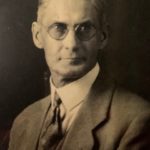 (3GGF) Reuben Barker Whitaker was born in New Jersey on 8 Jan 1800. He married Frances (Fanny) Martin and their children were: David (1823-1850) Lemuel (1824-1895) John Buchanan (1826-1872) Milton (1828-1863) Annis (1834-1913) Lewis (1838-1890)
(3GGF) Reuben Barker Whitaker was born in New Jersey on 8 Jan 1800. He married Frances (Fanny) Martin and their children were: David (1823-1850) Lemuel (1824-1895) John Buchanan (1826-1872) Milton (1828-1863) Annis (1834-1913) Lewis (1838-1890)
He married Margaret Hannah Smith (1813-1881) in 1853 and their children were: Adelia Mary (1854-1929) Beth Ann (1858-1941) Ruth A (1858-) Seth (1868-)
He passed away on April 11, 1868 in Jefferson, Coshocton, Ohio, United States.
The Move to Illinois
(2GGF) John Buchanan Whitaker was born on May 13, 1826, in Muskingum, Ohio. He married Louisa Catherine Cheek. Their children: Henry Edward (1858-1923) Mary Ella Ellen (1861-1936) James Buchanan (1864-1952) William (1864-) Reuben S (1871-) He died on June 8, 1872, in Forest City, Illinois, at the age of 46.
(GGF) James Buchanan Whitaker was born July 16, 1864 in Forest City, Illinois. He married Ida May Barnes on January 1, 1893, in Mason, Illinois. Their four children were (John) Floyd (1894-1977) Nelda E (1897-1987) Edith Eugenia (1900-1990) (James) Leslie (1904-1962) James B died in 1952 in his hometown at the age of 88.
(GM) Edith Eugenia (Whitaker) Meeker was born in 1900 and attended school in the Manito/Forest City area. She married Sam Meeker October 6, 1920. She supported her husband in his farming endeavor and was a loving and devoted wife and mother. They had four children. (Paul, Clyde, Loren, Lyle) . Edith died of natural causes in 1990 and her husband Sam died a few hours later of the same thing (broken heart?).
In a Nutshell:
Johias Whitacre 1042-1066 (25th great-grandfather of Linda)
Edwinus Whitaker 1060-1087
Simon Whitaker 1080-1135
Alanus Whitaker 1133-1227
Jordan Whitaker 1200-1275
Sir John Whitaker 1240-1278
John Whitaker 1275-1330
Richard Simon Whitaker 1300-1380
Sir Richard Whitaker 1380-1434
Thomas Henry Whitaker 1405-1448
Robert Whitaker 1440-1531
Sir Thomas Cromwell Whitaker 1458-1529
Richard Thomas Whitaker 1480-1540
Thomas Whitaker 1504-1598
William A. “Rev” Whitaker 1548-1595
William Whitaker DR 1582-1638
Jeremiah Whitaker 1599-1654
Richard Whitaker 1644-1710
Richard Whitaker, II 1680-1720
Nathaniel Whitaker 1694-1752
Lewis W Whitaker 1734-1773
Lemuel Whitaker 1772-1849
Reuben Barker Whitaker 1800-1868
John Buchanan Whitaker 1826-1872
James Buchanan Whitaker 1864-1952
Edith Eugenia Whitaker 1900-1990
Paul Burton Meeker 1922-
Linda Lee Meeker 1952-
Did you find mistakes? Would you like to add something?
Feel free to contact:
Tom Knuppel Husband of Linda (Meeker) Knuppel
email- tknuppel@gmail.com



